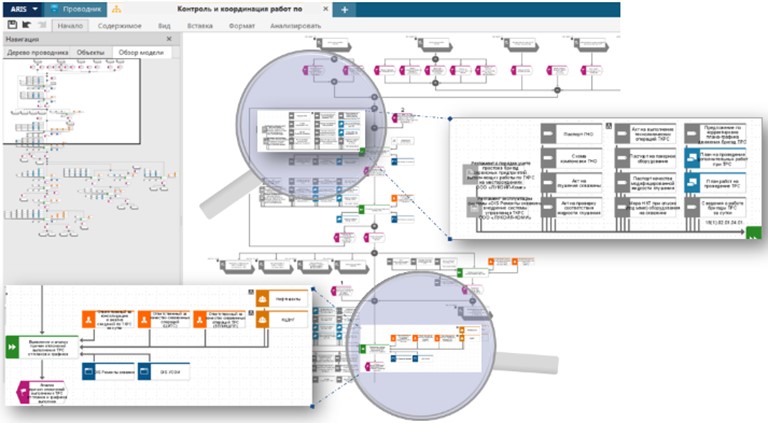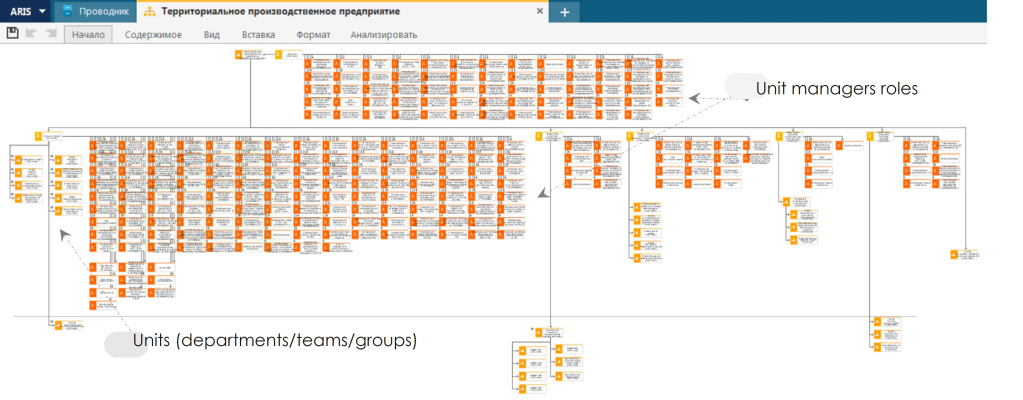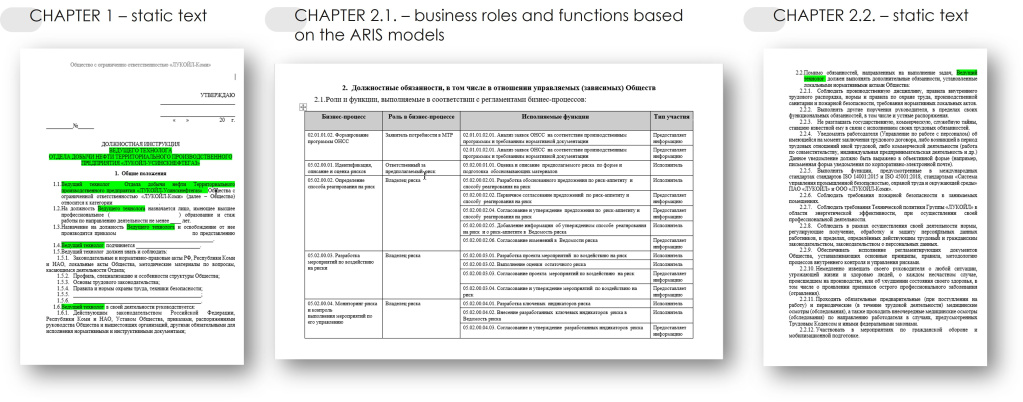Development of the “AS IS” business processes models of the Chief engineer’s office in Oil and Gas producing asset
CUSTOMER BACKGROUND
A subsidiary of one of the biggest independent Oil and Gas company in Russia with Asset in Timan-Pechora Oil and Gas Basin focused on all the oil and gas upstream key value chain stages: geological surveys, exploration, production, delivery, sales of oil, gas and gas conversion products. Asset delivers exploration and production activities in 8 districts of the Komi Republic and the Nenets Autonomous District. An Asset organizational structure includes 3 regional production units, an oil producing mine and a gas processing plant. Total amount of staff is more than 7,100 people.
PROJECT PURPOSES:
-
To develop a detailed description down to the function level of the business processes executed by Chief engineer’s office personnel in accordance with the regulatory documentation and guidelines applied in the organization.
-
To provide a practical tool for the business processes change management under the dynamic environment conditions – “one-click” job description development and staff workload analysis.
SCOPE OF WORK:
-
Business process and organizational structure modeling
-
Development of the tool for automated job description drafting, and staff workload analysis based on the models and assigned business roles.
-
Development of Customer’s internal competency for the business processes database maintenance.
PERFORMED TASKS:
Project duration – 1 year.
Internal documents gathering and analysis – 859 documents (job descriptions, department regulations, functional processes guidelines).
Personnel interviews and workshops – more than 90.
Business processes taxonomy and decomposition were performed.
Business processes diagrams were developed in accordance with the EPC (event-driven process chain) requirements.
Level 3 diagrams amount – 135.
Level 4 diagrams amount – 532.
Identified business functions – more than 4,800.
Identified documents used under the function execution – more than 4,500.

Organizational structures of all units of the Chief engineer’s office were developed down to the level of each specific position.

Each position has business roles and specific functionality assigned. More than 2,000 roles are identified.
A script was developed for automated un-loading of the L3 diagrams book.
A script was developed for automated drafting of the L3 business process guideline.
A script was developed for automated drafting of the job description.

The main chapter of the job description is compiled based on the business processes and organizational structures models aligned with functions due to the roles assigned. Required functions are being selected from the whole business processes taxonomy, as main as auxiliary. The job description draft includes the nature of the participation in the function execution in accordance with RACI matrix approach (R – responsible, A – accountable, C – consulted, I - informed).
More than 426 job descriptions were developed and accepted by the Customer.
A script was developed for automated un-loading of the Excel template for staff workload calculation.
Scripts for automated auxiliary analytical reports are developed.
Customer staff was trained in working with the business processes modelling environment.
ADVANTAGES OF THE ESTABLISHED BUSINESS PROCESSES ENVIRONMENT
-
Business processes and organizational structure ever-greening.
-
Change management “one-click” response for the adding/excluding of the business lines, processes and functions.
-
“One-click” response for organizational structure and specific position functions and roles changes.
-
“One-click” drafting of huge amount of job description based on the up-to-date processes.
-
Functions and roles driven job descriptions.
-
“One-click” comparison analytics of the roles and functions for different business units and positions.
-
The unified staff workload calculation template based on the functions and business roles.
-
A template for workload assessment in accordance with current composition of roles.
FURTHER DEVELOPMENT OPPORTUNITIES
-
Automated development of RACI matrices down to function level.
-
Implementation of catalogue of Regulatory documents and functional processes guidelines.
-
Analysis of alignment of the information systems with positions and business roles. Development of the staff skills training requirements for the specific software solutions.
-
Models version management and automated change tracking.
